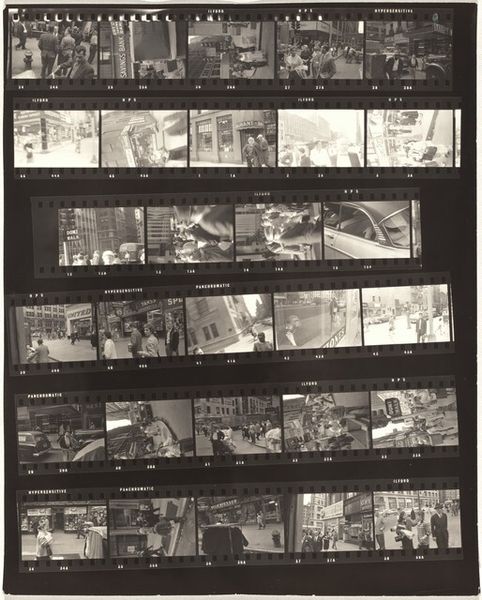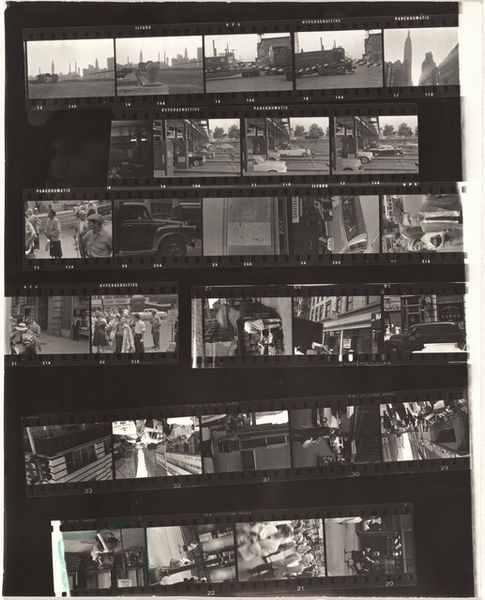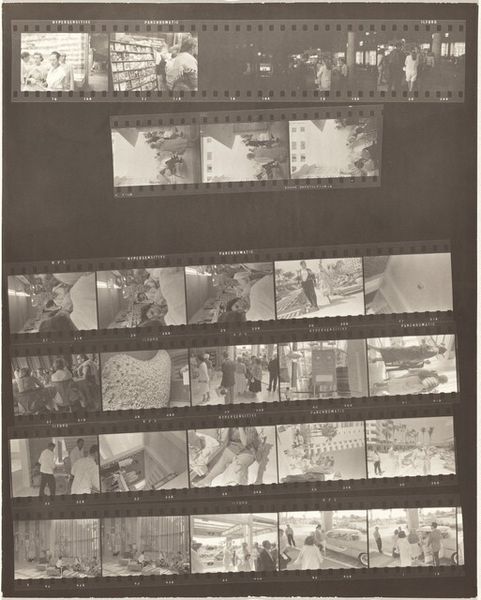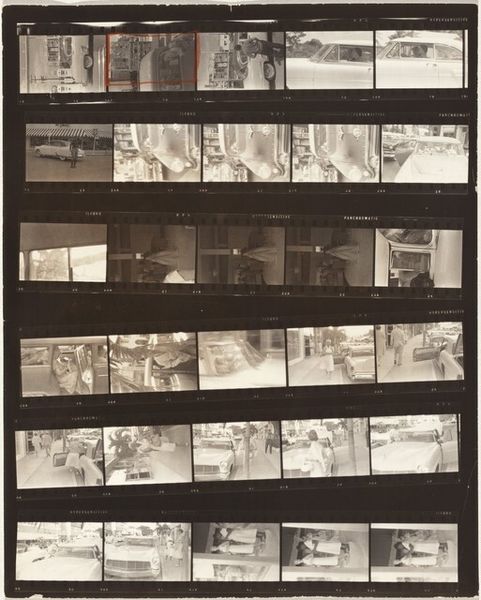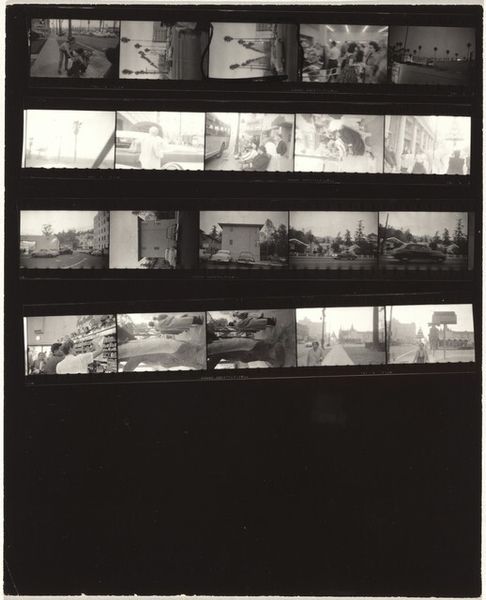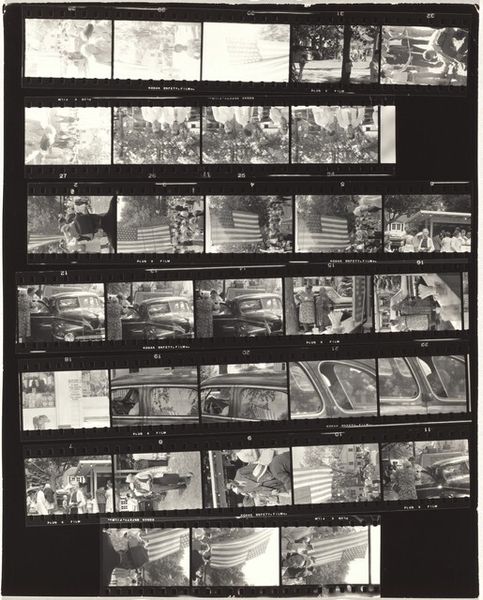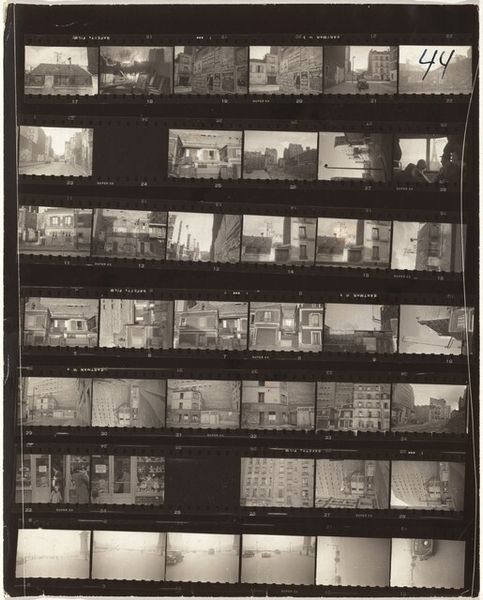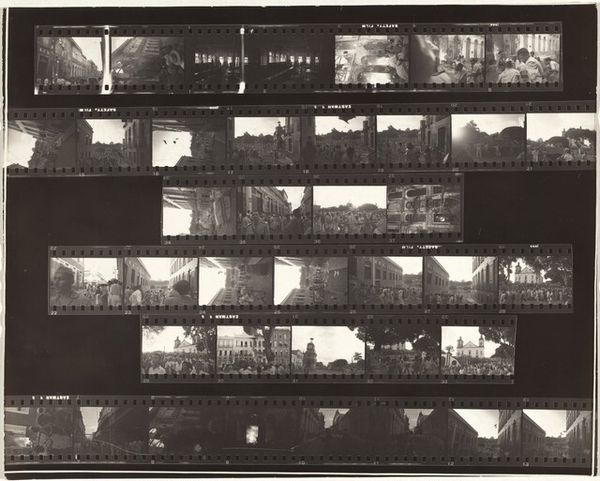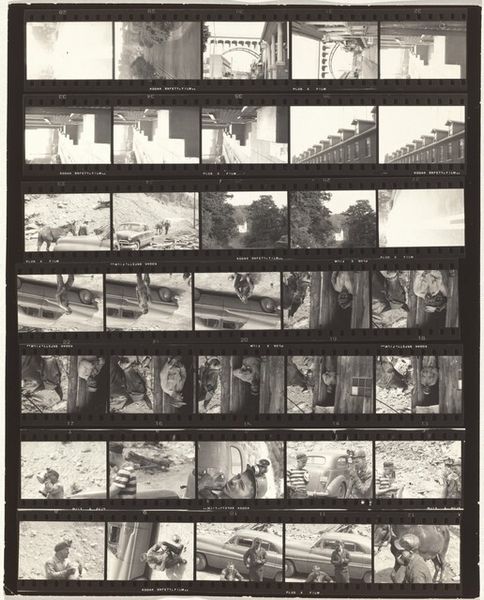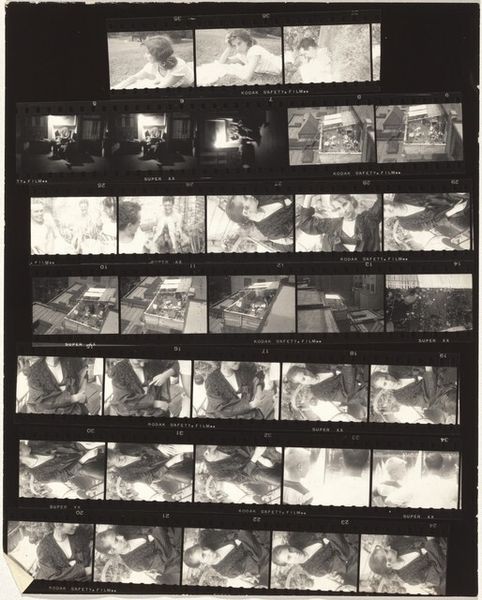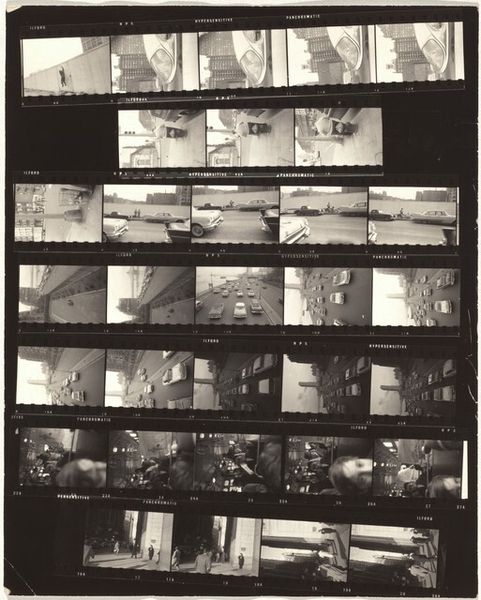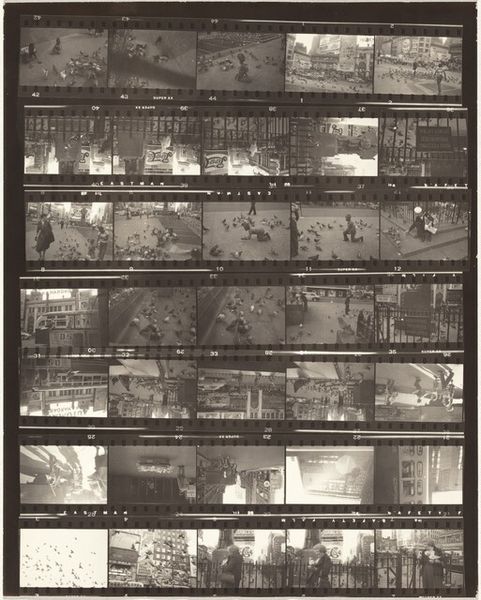
photography, gelatin-silver-print
#
portrait
#
film photography
#
photo restoration
#
archive photography
#
street-photography
#
photography
#
cultural celebration
#
gelatin-silver-print
#
monochrome photography
#
modernism
Dimensions: sheet: 20.2 x 25.2 cm (7 15/16 x 9 15/16 in.)
Copyright: National Gallery of Art: CC0 1.0
Curator: Here we have a contact sheet by Robert Frank, entitled "Women for 'Vogue'--rejects 17", dating from 1952-1953. It’s a gelatin silver print, presenting a fascinating behind-the-scenes look at a fashion shoot, or rather, a series of shots that didn’t make the cut. Editor: My first thought? Intimacy. Seeing all those individual frames lined up like that makes me feel like I'm rifling through someone's secret scrapbook, peeking into a world of poised elegance, even the rejected shots! Curator: Absolutely, and what’s compelling is understanding this "rejects" designation. Vogue, as a major fashion publication, has always cultivated an image of curated perfection. To see what wasn’t considered "Vogue-worthy" offers insights into the standards of the time. Editor: It's interesting—these aren't disastrous images, by any means. There's something so human about them though, less manufactured, like stolen moments, little quirks and glances—things that were probably seen as imperfections then are actually what draw me to them. You know? It feels so refreshingly... un-Vogue, for lack of a better term! Curator: Precisely! Frank, of course, went on to produce his seminal work "The Americans" which intentionally disrupted conventional imagery. We can consider this contact sheet as a precursor to that aesthetic shift; Frank clearly already possessed a keen eye for capturing an authentic, even raw, quality. Editor: I keep circling back to that tension: between manufactured perfection and the accidental, candid reality. This one frame here… number 20 maybe… I get a glimpse of vulnerability, a fleeting moment where the model seems almost… tired. Curator: Yes. These ‘rejects’ offer a unique historical record, disrupting notions about mid-century ideals of beauty, about fashion photography and of women during that period, presenting an alternative perspective, of women and photography itself. Editor: I will say, sifting through these photographic outtakes is rather exciting. I find myself composing an entire narrative from the rejects...it's like imagining the possibilities they once represented before they were left aside. Curator: Exactly! So this almost accidental archive ends up as revealing as, or even more revealing than, the carefully curated publication itself. It forces us to examine how context and intention shape our understanding of images and the narratives they construct. Editor: Absolutely. Now that I consider, "rejected" is probably the exact reason it intrigues me this much... it sparks my imagination like only found things can!
Comments
No comments
Be the first to comment and join the conversation on the ultimate creative platform.
